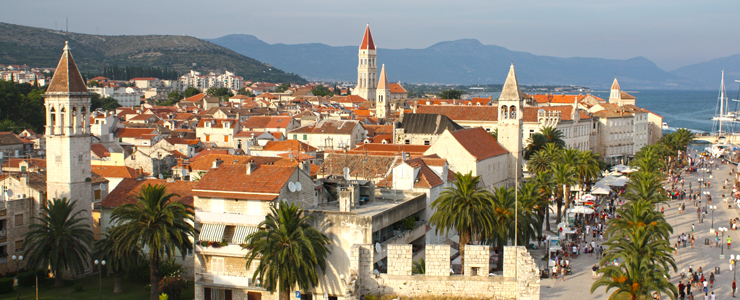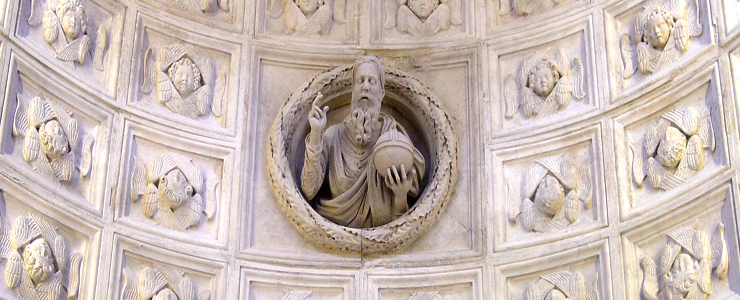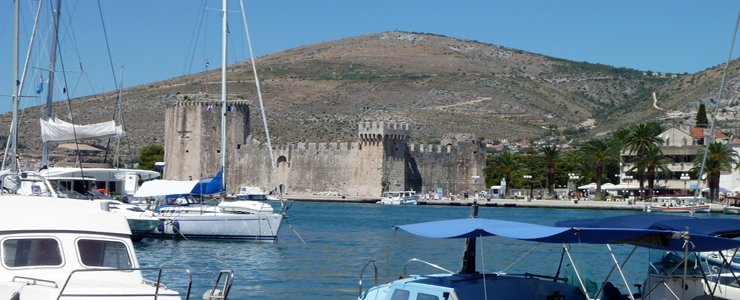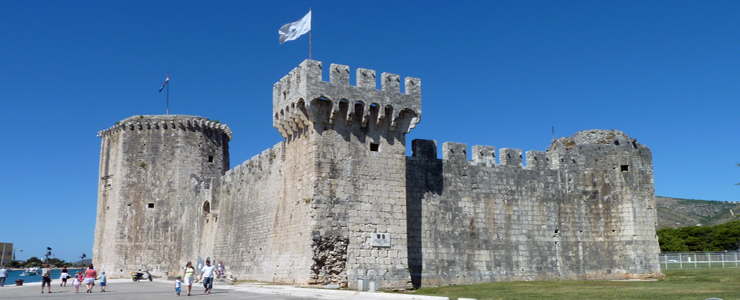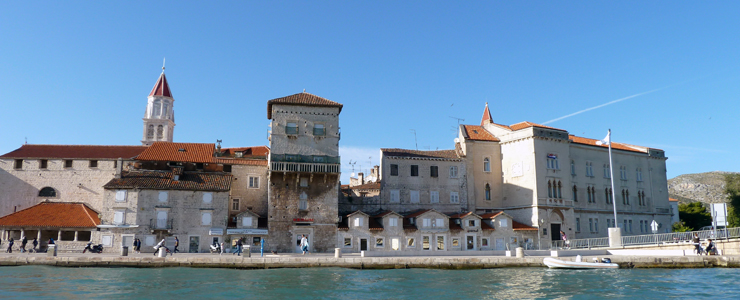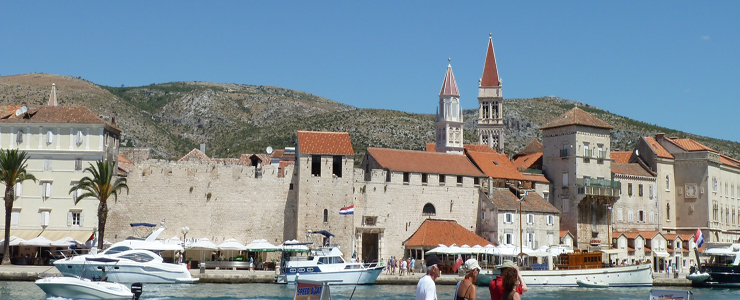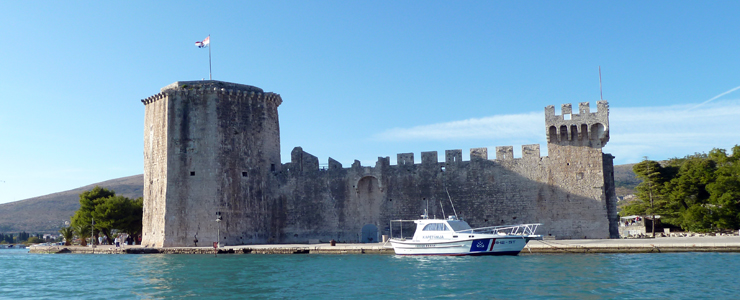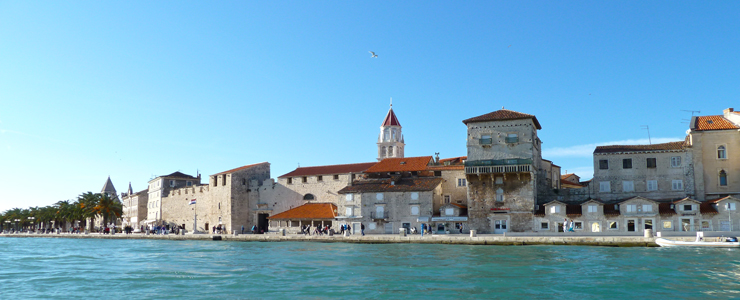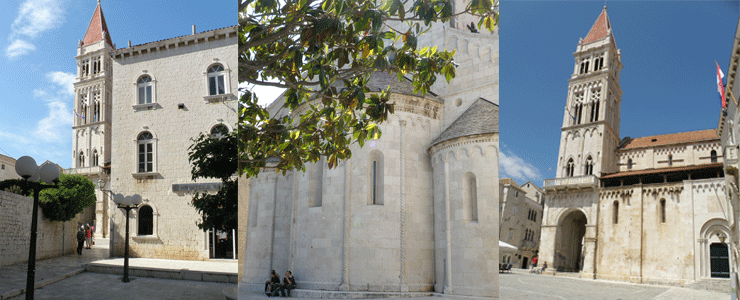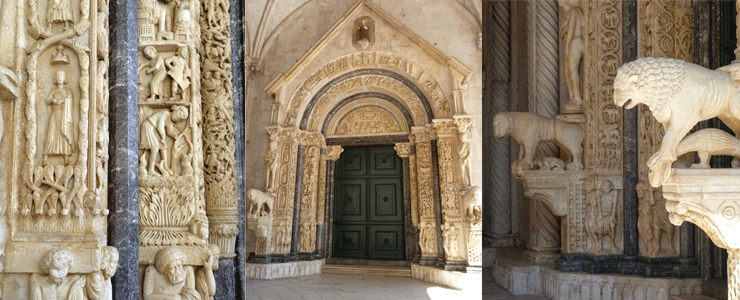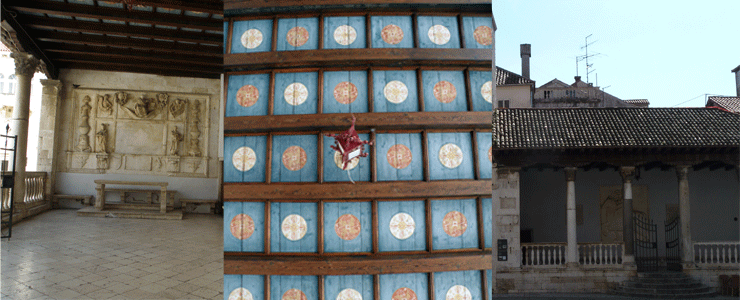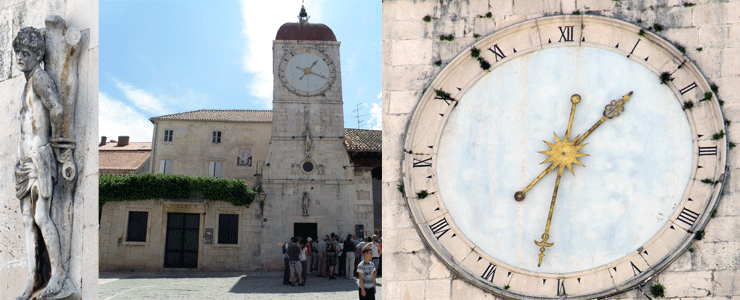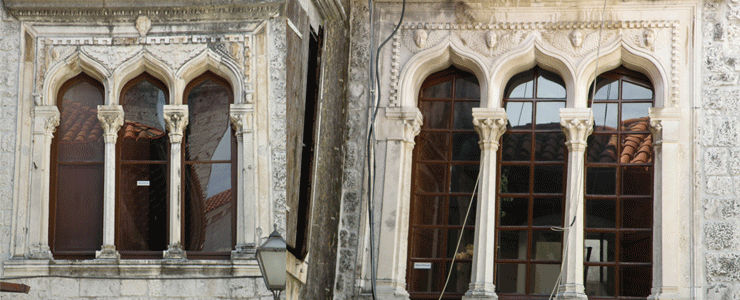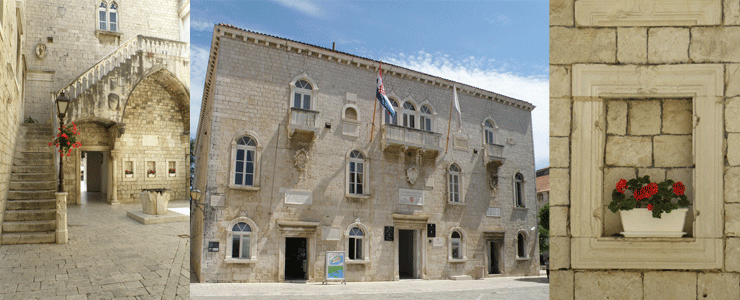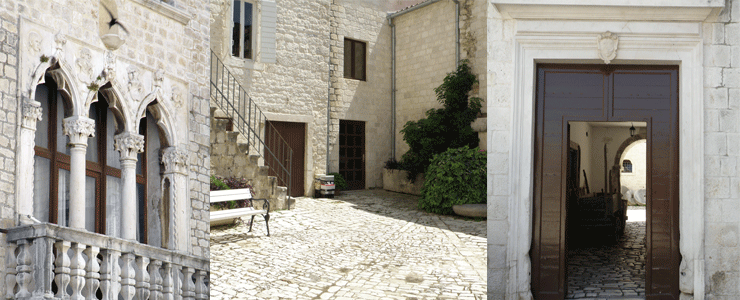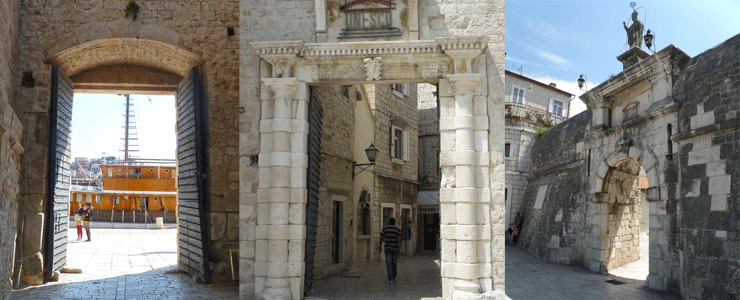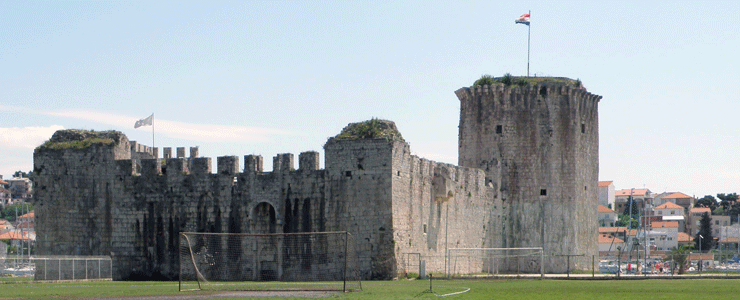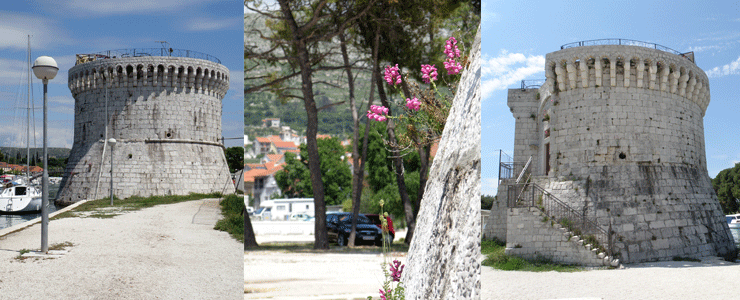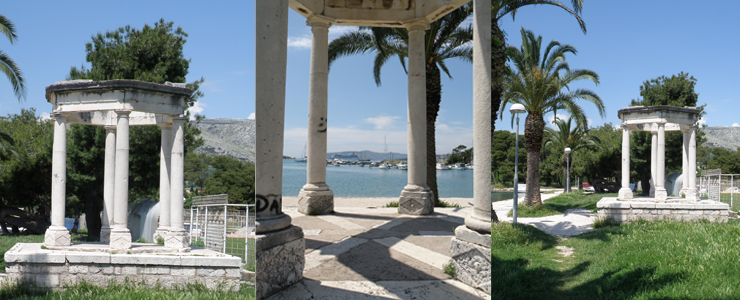Cathedral of St. Lawrence (St. John of Trogir) is the most famous symbol of the city of Trogir. It was built and rebuilt for four centuries; from the 13th till the 17th century and therefore represents a mixture of different art styles from Romanesque, Gothic and Renaissance to Baroque. The bell tower is an interesting example of the growth of architectural monuments through time in Dalmatia. It offers an overview of all of art styles represented in Dalmatia, from Romanesque to Mannerism. However, we could state that the most of the cathedral was built in Romanesque style.
Portal of Master Radovan, the main entrance to St. Lawrence Cathedral (finished 1240), is monumental and unique piece of art of Dalmatian Middle-age plastic, one of the most important monuments of Croatian history, as well as of Eastern Adriatic in whole.
Along the north wall of the cathedral one can find one of the most beautiful renaissance monuments in Europe, the chapel of St. John of Trogir, the patron saint of the city. The ceiling is covered with 26 cassettes containing heads of seraphim.
In the cathedral sacristy, which serves as treasury from the 15th century, one can find gold and silver artefacts, vestments, sculptures and other city treasures.
City Loggia, situated on the main city square, used to be a public facility used as a shelter, place for gathering and a courtroom. Rich reliefs that can be found on it are works of famous Nicholas of Florence and Ivan Mestrovic.
Votive Church of St. Sebastian is located opposite the cathedral, right next to the City loggia, and was built in the mid 15th century as an acknowledgement to the saint Sebastian for saving the town from the plague. Instead of a bell tower it has a town clock.
Palace Ćipiko is also located on the main square, and is in fact an assembly of several buildings merged into a single unit over the course of history. The oldest walls date back to early Middle Ages but the majority of the complex was built in the 13th century by the Ćipiko family. Large gothic triple lancet window made by Andrija Alesi dominates the facade facing the square. A few famous artists worked on the palace complex; doors are works of Ivan Duknovic, south portal of Nicholas of Florence as well as the stairs, doors and some reliefs on the „small“ palace.
The Rector’s Palace, today the city hall, dates back to 13th century and was rebuilt in the 19th century. Today it also houses the Tourist Information Centre.
Trogir Town Museum is situated in the palace of one of Trogir’s rich and influential families; Garagnin – Fanfogena palace. The palace was built for residential and economy use and is rich in details from different stylistic periods; from Romanesque to Baroque.
Remains of defensive walls from the 13th century can be seen from the south waterfront (the Riva) along with remains of what was once a shelter for all those that came to the city too late (after the city gates were closed for the night).
The city gates can be found on the south and the north side of the city. South gate, a huge wooden doors reinforced with nails, according to the inscription above them, were built in the year 1593. and the north gates date to the Renaissance and are made by Bonino from Milan. The staute of the patron saint – St. John of Trogir is placed above the gate.
Kamerlengo fortress is situated on the southwest edge of the Trogir old town and was built in the 15th century by the Venetians to house the military that was fighting against the Turks. It is named after Kamerlengo (camerarius), clerk-treasurer who led all financial affairs in consultation with the prince. Nowadays it houses an open stage during the summer months and its top offers a breathtaking view of the waterfront, the entire old town of Trogir and its many steeples, as well as Ciovo island and surroundings.
The tower of St. Mark is situated on the north-western edge of the old town. The round tower, tailored to resist cannon shots, was built by the Venetian Republic during the 15th century and the Turkish invasion. It was originally connected to the Kamerlengo fortress and the city walls.
Glorijet (classicist pavilion) was built between the Kamerlengo fortress and the tower of St. Mark at the beginning or the 19th century during the French government in Dalmatia and in honor of Marshal Marmont. It is particularly interesting because it is one of the few monuments of the French government in Dalmatia.
